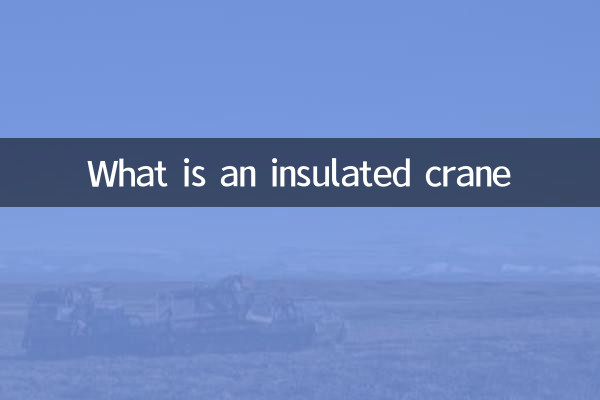What is an insulated crane
Insulated cranes are specially designed lifting equipment, mainly used for safe operations in high-voltage electric fields or live environments. It effectively prevents current conduction by using insulating materials and technology, ensuring the safety of operators and equipment. Insulated cranes are widely used in power, communications, chemicals and other industries, especially in the maintenance and maintenance of high-voltage transmission lines.
Main features of insulating cranes

Insulated cranes have the following core features:
| Features | illustrate |
|---|---|
| Insulation material | Use high-strength insulating materials (such as epoxy resin, glass fiber) to make key components to ensure that the current does not conduct. |
| Safety protection | Equipped with multiple safety devices (such as insulation monitoring, leakage protection) to prevent accidental electric shock. |
| Lightweight design | Reduce weight while ensuring strength, making it easier to operate and move at high altitudes. |
| Weather resistance | Adapt to harsh environments such as high temperature, low temperature, and humidity, and maintain stable performance. |
Application scenarios of insulating cranes
Insulated cranes are mainly used in the following scenarios:
| industry | Specific application |
|---|---|
| Electricity Industry | High-voltage transmission line maintenance, substation equipment installation and maintenance. |
| Communications Industry | High-altitude communication tower mounts and maintenance to avoid electromagnetic interference. |
| Chemical Industry | Lifting equipment in flammable and explosive environments to prevent accidents caused by static electricity. |
| Construction | Work on the construction site near high-voltage wires to ensure construction safety. |
Technical parameters of insulating cranes
The following are the technical parameters of a typical insulating crane:
| parameter | scope |
|---|---|
| Load Rated | 1-20 tons (depending on the model) |
| Operating voltage | 10kV-500kV (higher voltage can be customized) |
| Insulation level | Class B/F/H (heat resistance level) |
| Working radius | 5-50 meters |
| Ambient temperature | -20℃ to +60℃ |
Precautions for operating insulating cranes
To ensure safety, the following things must be paid attention to when operating an insulated crane:
| Things to note | Detailed description |
|---|---|
| Regular testing | Check whether the insulating parts are intact, free of cracks or aging before each use. |
| Keep it dry | Avoid insulating components contacting water or humid environments during operation. |
| Safe distance | Maintain the minimum safe distance from the charged body (such as ≥0.7 meters at 10kV voltage). |
| Special operation | It must be operated by certified professionals and illegal operations are prohibited. |
Development trend of insulating cranes
With the advancement of technology, insulating cranes are developing in the following directions:
| trend | illustrate |
|---|---|
| Intelligent | Integrate sensors and IoT technology to monitor insulation status and load conditions in real time. |
| Modular design | Quickly replace insulated parts to reduce maintenance costs. |
| Higher voltage level | To meet the operating needs of ultra-high voltage power grids (more than 1000kV). |
| Green environmental protection | Use recyclable insulating materials to reduce environmental pollution. |
Conclusion
As special equipment, insulated cranes are indispensable in ensuring power safety and efficient operation. With the development of new energy and smart grids, their technical level and application scope will continue to expand. When making a choice, users should focus on insulation performance, safety certification and after-sales service according to actual needs to ensure the long-term and stable operation of the equipment.

check the details

check the details